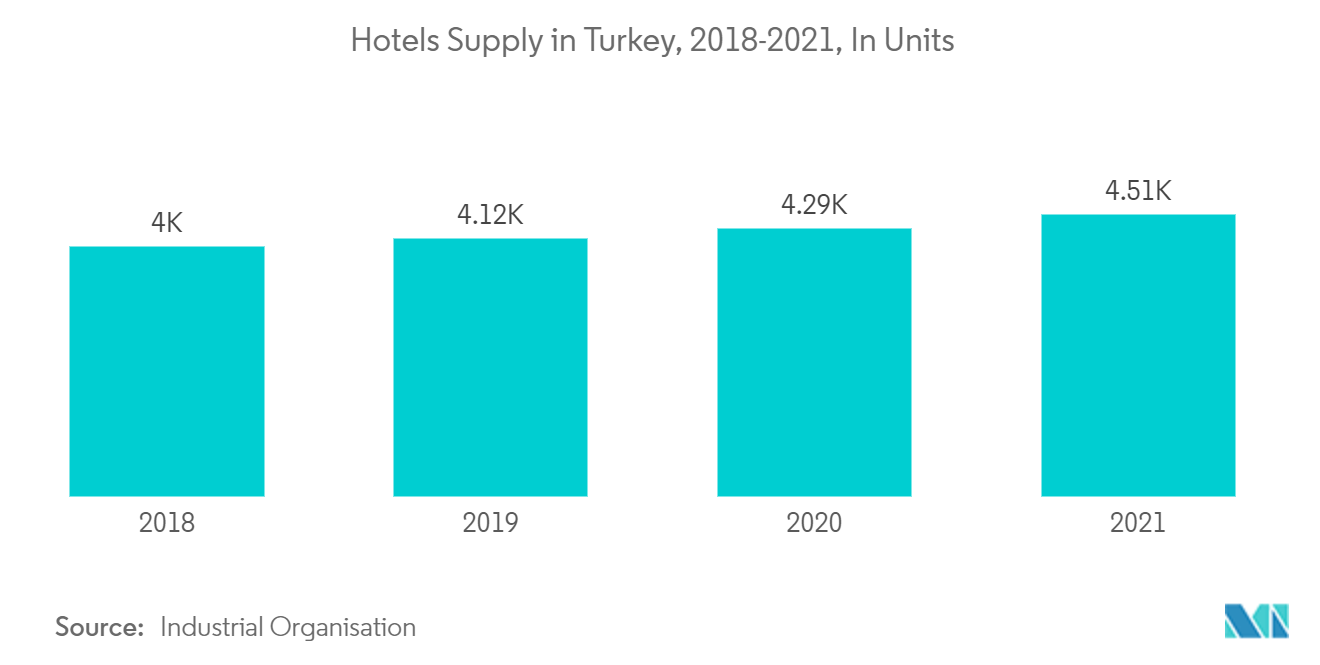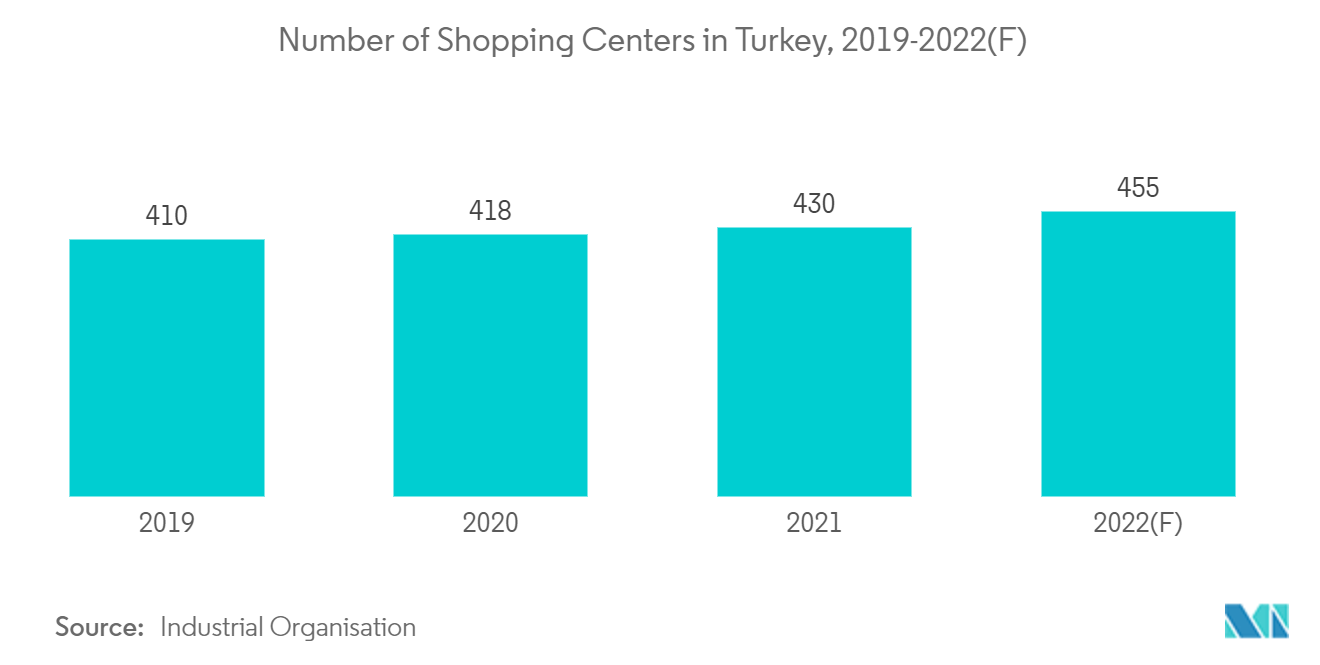Market Trends of Commercial Real Estate Industry in Turkey
This section covers the major market trends shaping the Turkey Commercial Real Estate Market according to our research experts:
Improvement in Hospitality Sector
The hospitality industry has been in decline throughout the pandemic but has shown improvement in 2021 with the removal of travel restrictions and the increase in vaccinations. Tourism parameters have improved significantly compared to last year but lagged behind the pre-pandemic period. The occupancy average increased by 45% and was recorded as 52% across Turkey in 2021 compared to the same period of the previous year, where the occupancy averaged 55% in Istanbul 2021. ADR (Average Daily Rate) averaged EUR 82 and EUR 91 in Turkey and Istanbul, respectively, and recorded increases year-on-year in 2021. Average occupancy and ADR in Europe recorded 43% and EUR 104, respectively, in 2021, whereas Turkey's ADR recorded behind in the same period.
The total number of hotel facilities reached 4,511 overall in Turkey in 2021, and five-star hotels have a market share of 16.7%. Istanbul has reached 671 graded hotels, where five-star hotels represented 18% in 2021.
At the end of the first half of 2021, there was a significant increase in passenger demand with the lifting of travel restrictions. In 2020, the total passenger count being 128.5 million overall in Turkey increased by 57.4% compared to the year before. Total passenger arrivals in Istanbul via Istanbul Airport recorded 37.2 million, and Sabiha Gokcen Airport reached 25 million, significantly increased by 59% and 47% y/y in 2021, respectively.

Growth in Retail Sector in Second Half of 2021
The first half of 2021 was a year in which the country felt the impact of the pandemic on the economy more prominently and was stagnant due to curfews. In the retail sector's second half of the year, with the increase in the number of people vaccinated, the removal of weekend restrictions, the introduction of normal working hours, and the return to face-to-face education in September, signs of recovery started to show. The new variants of the Covid-19 virus and the increase in the number of cases, which came to the agenda in the last quarter of the year, caused concern but did not affect the physical retail as much as expected.
The recovery path at a slower pace indicated a partial rebound before the second wave curfew in November. Therefore the turnover index significantly increased by 80.2% in November 2021 compared to the year before, given the results of the shopping center retail data provided by AYD/ Akademetre. All category sales rose y/y in November 2021. Apparel and shoes recorded increases of 89% and 102.9%, respectively. Apparel decreased by approx. 4% and the shoe category increased slightly by 0.8% m/m. The highest and significant increase was again by 136% in the food & beverage category, while increased with a lower acceleration compared to other categories was technology with 28.7% in this quarter. In November 2021, when new Covid-19 variants emerged, and the number of cases increased, there was a 6.25% decrease in the footfall index compared to the previous month. However, an increase of 38.9% was recorded when compared to the same month of the previous year.


